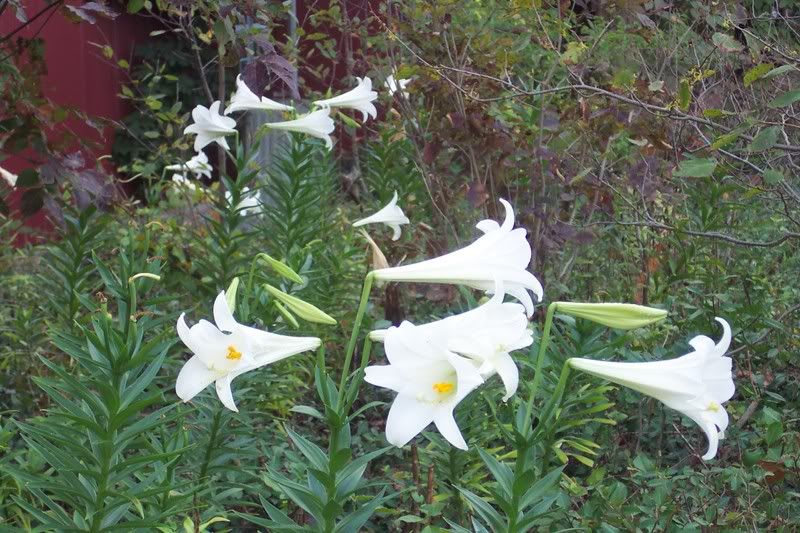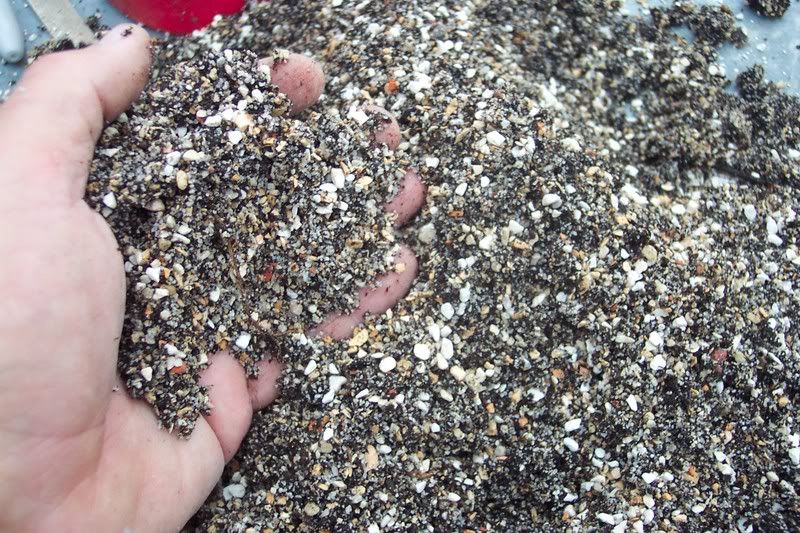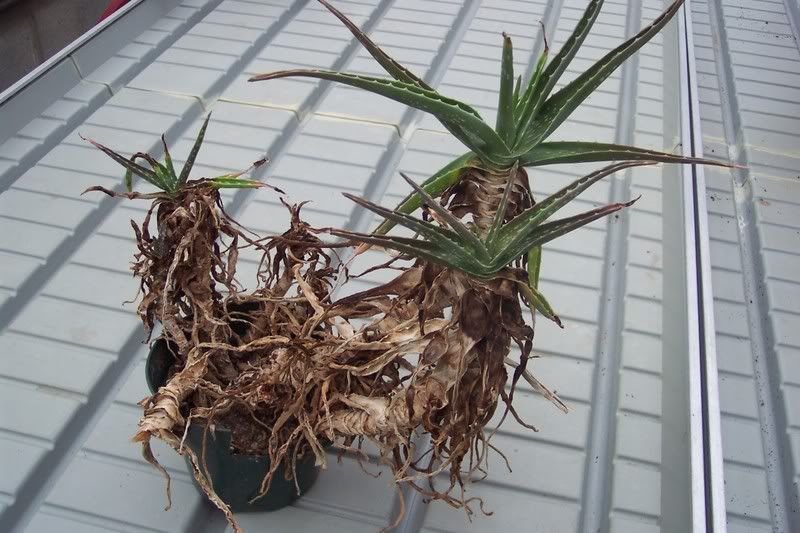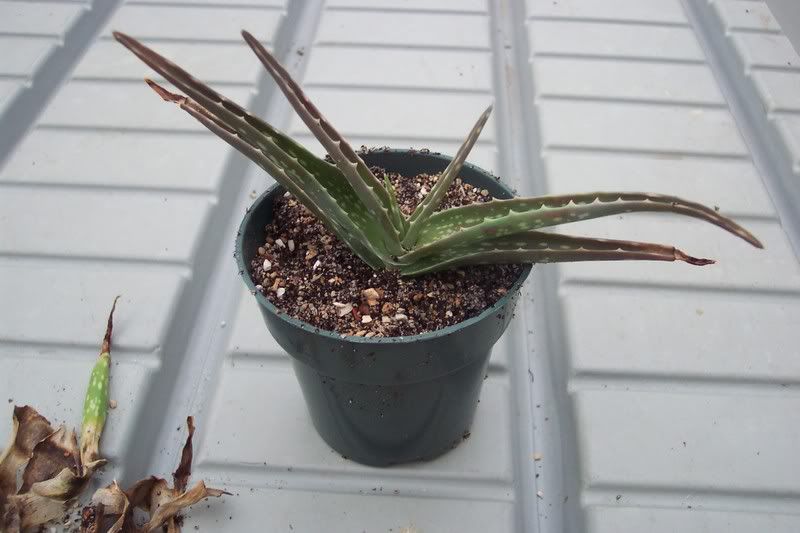We have a very interesting botanical event happening in the greenhouse right now. One of our Agave plants is blooming.

Agave plant in full bloom
This plant is about 3 or 4 years old and has decided to bloom after all this time. This is actually fairly quick for an Agave though. Their other nick name is “century plant” , so-called because of the seemingly long length of time it normally takes them to flower in the wild.
Agaves are native to the southwestern part of this country and “south of the border down Mexico way”. The ‘Blue Agave’ variety that grows in the Mexican state of Tequila is used to make… you guessed it…Tequila.
I don’t know what variety this one is since Judy rescued it from going into the compost bin at the Botanical Gardens. At that time the plant was just a small one inch diameter “bulblet” with no name.
Agaves only bloom when they have stored enough energy in their roots and leaves. How many years this takes depends on the species. After blossoming and forming seeds, they die, trusting that the seeds will carry on the next generation.
Even though this Agave of ours is planted in a small 8 inch pot, the flower stalk is 10 feet tall! It has been alternately ignored and well tended throughout its life. It couldn’t have had life too hard since it took quite a bit less time than a century to bloom. We had a few last year that were in 6″ pots and their stalks reached nearly 6 feet.

This Agave is planted in an 8" pot. Note the swollen bulb-like stem.
I counted over 120 flowers on the flower stalk! Wow! Each flower will produce a bulblet that will go on to produce another plant. I’d say that is pretty good odds that the next generation will survive.
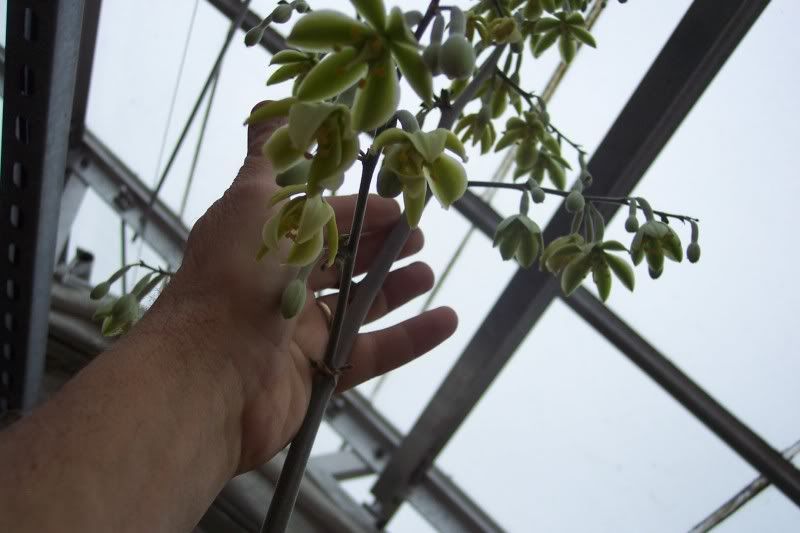
Our Agave produced a ten foot tall flower stem containing over 120 flowers. I can barely reach the lowest set of flowers.
The new seeds will go into a 20 inch pot. I wonder what will happen…
Bob
